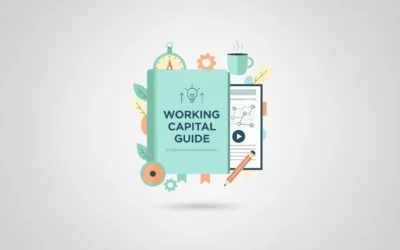Evaluating the Health of your Key Relationships and Partners
The strength and potential upside of a business is not just dependent on the internal team. Many companies rely on third parties for critical resources and services, such as suppliers, institutions, investors, and customers. These relationships can be extremely valuable for driving growth and improving systems. The deeper the roots go, the more value you get. The flip side of the coin is that the business can be exposed to significant risk if those third parties become unstable or significantly change their operation. We recently saw this happen to customers of Silicon Valley Bank (SVB), who had their world turned upside down in a few short days. This is a good time for businesses and owners to take stock of their critical relationships and know where the potential risks exist. Below are important steps in the process.
Identify Key Relationships
This may seem obvious, but the first step is to take a hard look at the different areas of the business. Where are there significant outside resources or relationships? Typical candidates may include, but aren’t limited to:
- Vendors and Suppliers who provide materials, components, or services that you need to deliver your product to the market
- Subcontract partners who act as an extension of your research and development, production, marketing, or finance team
- Key Investors who provide funding during capital calls, and strategic guidance for the business
- Customers who maintain a credit balance and provide recurring revenue for your products or services to meet their own needs
Narrowing the field to the most critical relationships will allow proper time and effort for each one.
Assess Stability
This part is often easier said than done. For publicly traded organizations, collecting data is very simple, but with private organizations there is more effort required. Stability applies to a lot of areas – financial, legal and regulatory, quality, and supply chain, to name a few.
Financial stability: Is the company showing good financial health? Does the company generate operating cash flow? Does the balance sheet have enough liquidity to cover debt obligations and other current liabilities? Is the company invested in any risky or un-marked positions (such as held-to-maturity securities)?
Legal and regulatory stability: Is the company in compliance with all relevant laws and regulations? Are there changes in the marketplace that are causing legal or regulatory issues that impact their ability to work with the business?
Quality: Does the company have a reputation in the industry for providing quality product and services? Has the company provided all products and services to the standard originally agreed? How many quality incidents have occurred in the prior 12 months?
Supply Chain: Are there global or other economic factors that affect the company? When speaking with them, do they have a plan to address these global issues and deliver your product or service uninterrupted?
While answering these questions and working through this exercise, red flags may appear that require further review. One issue may not be enough to jeopardize the relationship, but mitigating risks that are identified is the second half of the battle.
Mitigate Risks
Diversify: Keeping an up-to-date rolodex requires dynamic and consistent effort. Each of your key partners should have at least one known backup plan. These additional fail safes will reduce the downtime and damages to the business, on top of limiting the stress of a transition event.
Contract Review: When entering into new significant relationships, or renewing contracts with your current partners, spend the extra time with your legal resource to negotiate terms that protect the business in the event of a third party’s non-compliance, insolvency, or other major event. Planning for a breakup isn’t a fun exercise but will pay dividends during a disaster.
Monitor: Once the key relationships are understood, especially up and down the supply chain, it’s important to keep a pulse on the markets and governments where your partners operate. Often there are initial warning signs for economic and legal pressures, such as rising interest rates, changing regulation, global conflict, etc. The initial announcement of these events is often followed by a domino effect. By staying informed, owners can see the warning signs and act fast, mitigating risk to the business.
Strong relationships are an important part of the continued success of any business. There will always be some level of risk which must be accepted, but with careful planning and review, the downside can be significantly mitigated and the business will possess a strong foundation for growth and innovation.


